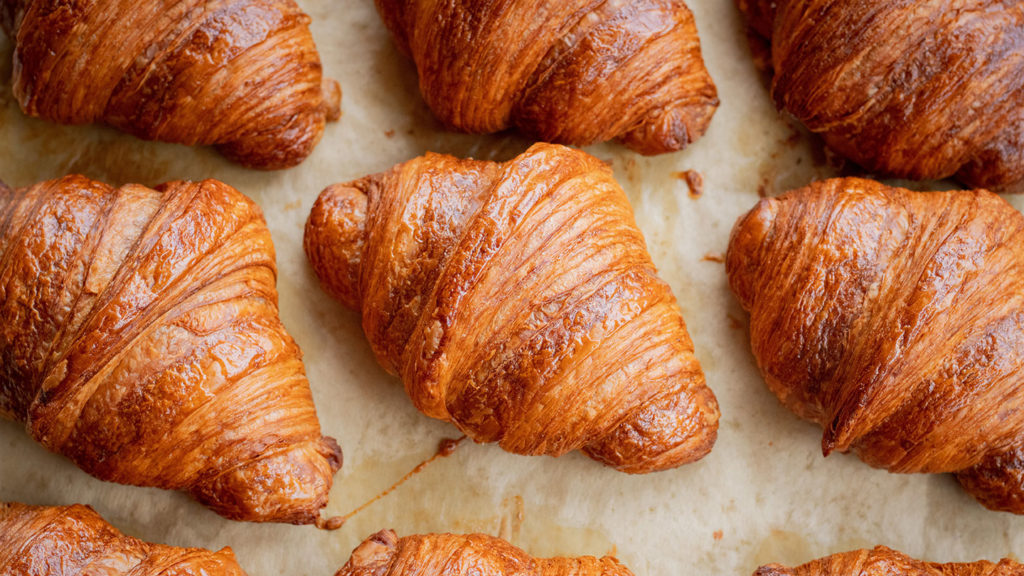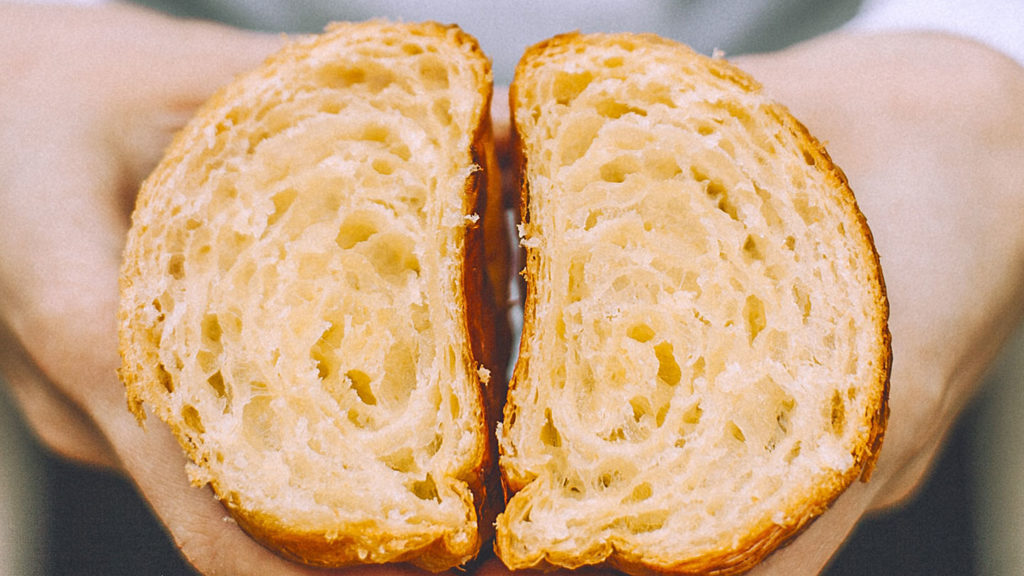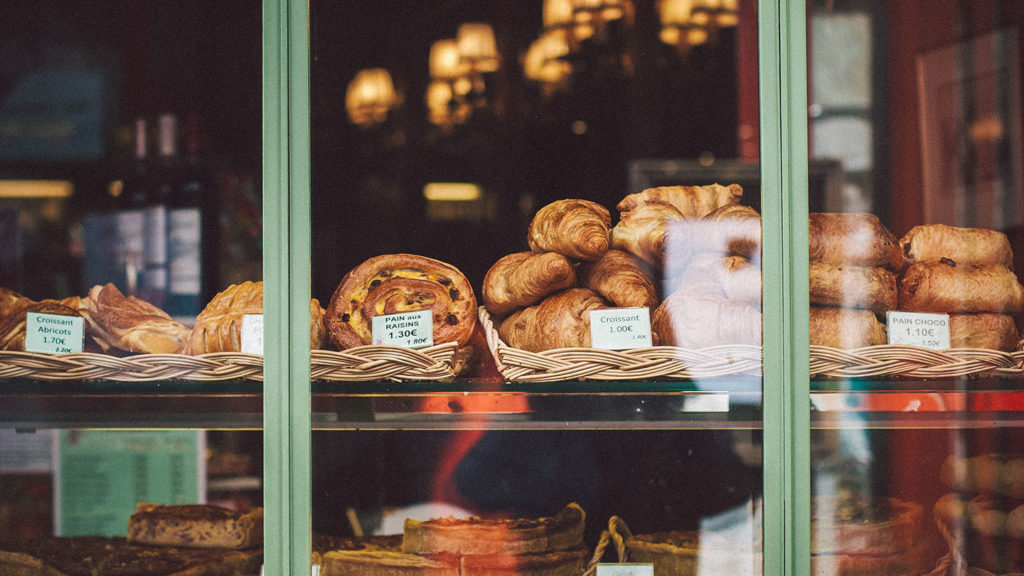Recently updated on March 4th, 2025 at 12:27 pm
Dozens of crisp, crunchy layers of buttery pastry that flake away on the first bite. Is there anything better than a just-baked croissant? But how did the French invent this pastry with layers and layers rolled into a triangle shape? First, a French history lesson. We’ll dive into at the history of a croissant ahead of National Croissant Day, and then uncover where to try the very best croissants in France and around the world.
Hint: the best croissant in the world isn’t even found in France!


Is the croissant French?
Short answer, kind of. Of course, what would the French identity be without the magnificent croissant? Funnily enough the original inspiration for this puffed buttery pastry actually came from outside of France.
The French history of a croissant falls to two legends and plenty of rumours. The first – which historians strongly dispute – is that Queen Marie Antoinette arrived in France and was homesick for her homeland Austria. She imported the Austrian kipfel, a crescent shaped pastry, to the French court in 1770 after her marriage to King Louis XVI. The other, more credible, legend gives credit to Austrian baker August Zang. In the 19th century the famous baker brought the kipfel to his Parisian boulangerie where the flaky pastry became instantly popular and began to turn into the croissant we love and know today.
But what is a kipfel?
The kipfel begins with yet another legend. Back in 1683 the city of Vienna was under siege by Ottoman soldiers. The Viennese locals had been under attack for more than two months and supplies and morale were running low when they heard word that the King of Poland was sending an allied army. Meanwhile the Ottoman army was making plans to dig under the thick protective city walls of Vienna, fill the trenches with gunpowder and blow up the walls. But some early rising bakers busy making bread for the city heard strange noises underfoot and alerted the authorities, who then decided to dig and intercept these plans.
In the meantime the Polish army arrived on the horizon, charging at the Ottomans who fled the scene. Vienna was saved and to celebrate the victory those bakers made a special pastry. The crescent moon shape of kipfel is said to resemble the shape on the Ottoman flag.
Kipfel means crescent in German, and croissant means the same in French. After all, if you use French puff pastry to make a kipfel you have a croissant.


So why are most croissants now straight?
Last French history lesson, we promise. Just look in any boulangerie window and you’ll see plenty of straight shaped croissants. In the middle of the 19th century when margarine was invented, bakers started using this instead of butter (it was cheaper and had a longer shelf life). So the French could tell a butter croissant from a margarine croissant, they started making the croissant au beurre straight while the croissant ordinaire, or margarine croissant, was left in the more traditional curved shape.
GET INSPIRED BY: Wonderful France
Where to try the best croissants in France
A good croissant is crispy and golden on the outside with a strong smell and taste of butter. Since France has some 30,000 boulangeries that pump out fresh croissants each day, you might be alarmed to hear that not all of them are good. Industrialisation and franchise bakeries mean that just because you’re in Paris you can’t guarantee a great croissant. A study from 2008 estimated some 30-40 percent of all croissants sold in France were baked from frozen dough. Yikes!
If you’re looking for where to try the best croissants in any French town, look for the words fait maison or look for boulangeries that are marked as artisanal. It means the croissants are more likely to be made fresh on site, rather than in a large factory where they are frozen and trucked in.


Some favourite places in Paris for a croissant:
- La Maison d’Isabelle, this family-owned boulangerie won gold for its all-butter croissant in 2018. Find it in the 5th arrondissement.
- Ble Sucre, run by a Michelin-starred chef. Located in the 11th arrondissement.
- The French Bastards, 11th, 7th & 17th arrondissements
- Du Pain et des Idées, 10th arrondissement
- Des gâteaux et du pain, 15th & 7th arrondissements
- La Patisserie Cyril Lignac, 6 locations
- Laurent Duchêne – 13th & 15th arrondissements
- Boulangerie Terroir d’Avenir – 2nd arrondissement
- Landemaine – 5th arrondissement
RELATED BLOG: Where to find (and eat) the absolute best croissants in Paris
Where to try the best croissants in the world
In 2016 a New York Times headline splashed “Is the World’s Best Croissant Made in Australia?”. With the decline of artisanal production in France and skilled bakers popping up around the globe, it’s no surprise that the great French hit pastry was being mastered abroad.
The bakery in question was Melbourne’s Lune Croissanterie, run by former aerospace engineer Kate Reid. Safe to say Kate is great with precision and combined her engineering background with pastry training to craft some of the most perfect croissants in the world.
Best places to try croissants around the world:
- Aux Pains de Papy – London
- Dominique Ansel – New York
- Amandine Patisserie Café – Los Angeles
- Au Kouign Amann – Montreal, Canada
- Mother Dough, Singapore
GET INSPIRED BY: Best of France
Did you enjoy that French history lesson? Let us know in the comments where you can find the best croissants in your hometown….